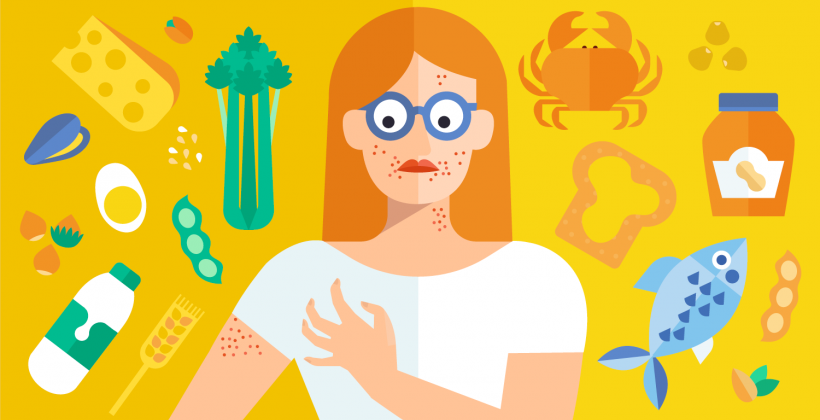Food intolerances are part of a larger group of disorders defined as adverse reactions to food: we speak of food intolerance, rather than allergy, when the reaction is dose dependent, due to the release of quantities of histamine that do not jeopardize the life or enzymatic deficiencies (lactose) or direct toxicity of the substance on the intestinal mucosa (gluten).
But what are the symptoms of food intolerances? The symptoms of food intolerance are extremely varied and can affect different parts of the body: headache, dermatitis, colitis, diarrhea, meteorism, mycosis, fatigue, insomnia … the symptoms can be many and of different nature and often evoke a malaise that is difficult to identify.
Are intolerances and allergies the same thing?
The answer is no. The difference between intolerances and allergies lies in the fact that for the former the reaction is strictly dependent on the quantity of the food not tolerated ingested (dose-dependent) or produced by the deficiency of a specific enzyme or by the toxic effects of the food on the intestinal mucosa.
For allergies, however, it is always the immune system that recognizes a substance as potentially dangerous, regardless of the quantity. The reaction is mediated by IgE antibodies that induce potentially serious effects that can endanger the life of the subject (link article allergies-intolerances).
Food intolerances in children
CHILDREN’S FOOD INTOLERANCES
Even children can suffer from food intolerances (but also allergies). In young children, especially during weaning, it is easy for food intolerances or allergies to arise. The substances that most often cause them are: cow’s milk, eggs, soy, gluten, tomato, citrus fruit, chocolate, fish, strawberries.
When a food intolerance is suspected, in an adult or a child, it is important to contact your doctor who will collect all the information provided by the patient (anamnesis) and will carry out an accurate clinical examination to take stock of the situation. He will then assess whether it is necessary to undergo specific tests to ascertain or rule out the presence of an allergy.
But what is the best test for food intolerances? The diagnosis of food intolerance is a diagnosis by exclusion: it is possible only after having investigated and excluded a food allergy. You should try to eliminate the suspect food from the diet for a few weeks and then reintroduce it with caution. If the symptoms disappear during the period in which the food is not eaten, only to reappear after reintroduction, it will be an adverse reaction to the food. At this point it will be necessary to check through the appropriate tests if it is an allergy and if the tests were to exclude it, in all likelihood it will be an intolerance.

There are numerous types of tests for assessing food intolerance which, however, lacking an official standard, may not always prove to be reliable or standardizable. A certainty is provided by the ‘Lactose Breath Test’ which identifies in a certain and shared way the intolerance to this sugar. The test consists in exhaling several times at regular intervals into a special bag before and after taking a single dose of lactose administered for this purpose; it is harmless and non-invasive, also suitable for children, and available in any public hospital. The only drawback is the duration, having to be carried out in about 4 hours to be sure of the deficiency of the enzyme and therefore of the poor digestion of the sugar which, in any case, will produce as a consequence only a more intense production of air in the intestine (meteorism) with the related inconveniences.
Treatment for food intolerances consists of eliminating from the diet or consuming in small quantities the foods that cause the reaction.
Can food intolerances be cured completely?
FOOD INTOLERANCES DETOXIFIED – You have probably heard that food intolerances are changeable over time and that they can therefore worsen, but also decrease in intensity until they disappear. What’s true in all of this?

